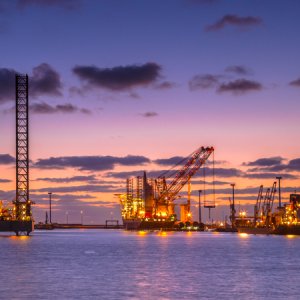Funding Mexico's Present and Future

STORY INLINE POST
The Mexican Petroleum Fund, known as Fondo Mexicano del Petroleo (FMP), was created as an instrument derived from the Energy Reform to manage oil and gas revenues and wealth. This makes one wonder why Mexico had not implemented such a mechanism before. Indeed, other oilwealthy countries have had hydrocarbons funds for decades. “It is important to point out two things,” Mauricio Herrera, Executive and Administrative Coordinator of Fondo Mexicano del Petróleo interjects. “The FMP is not Mexico’s first and only oil fund. The Stabilization Fund for Budgeted Income (Fondo de la Estabilización de los Ingresos Presupuestados), and the Stabilization Fund for Federal Entity Revenues (Fondo de Estabilización de los Ingresos de Las Entidades Federativas) preceded the FMP as hydrocarbon funds and continue operations alongside it.” Should Mexico experience turbulent times, the first line of defense would be these stabilization funds, and the funds from the FMP’s long-term reserve would only be available once all other resources have been depleted. “The Federal Government will only have access to the FMP’s long-term reserve provided there has been a decrease, in real terms, of federal revenues for at least two years in a row,” Herrera points out. “Secondly, the FMP is not an exact replica of the typical oil funds found across the world. Unlike these, the saving of hydrocarbon wealth for future generations is not its sole purpose. It is also in charge of receiving and administering the revenues arising from Mexico’s hydrocarbons production, acting as a treasury within the oil scheme. The Mexican Petroleum Fund has the obligation to transfer the revenues it receives following an order that was established by law.” Practically speaking, the FMP has two modus operandi. Depending on the type of contract, it either receives all of an operator’s income and gives the latter back its share, or the operator sends the FMP only what it owes to the government.
Looking at the interaction between the different governmental organisms and the operator, Herrera explains that the Ministry of Energy establishes the technical qualifications for potential contractors and the Ministry of Finance defines the economic terms and establishes the economic variables that determine the winner of the bidding rounds. “Focusing on the financial aspects, the most important payments commence during the production phase,” Herrera tells. “The contract establishes a mechanism of monthly payments, and any adjustments will be reflected in the future stream of revenue. Every month contractors and CNH will submit the information the FMP requires to calculate its payments using the fund’s technological platform.” He goes on to explain that subsequent to the payments being made, the Ministry of Finance can audit the information and instruct adjustments to the payments. For this purpose, it can rely on SAT as the state auditor, or on a third party. Finally, SAT directly receives and supervises the payment of any fiscal obligations. “All information and documentation will be submitted electronically using electronic signatures,” Herrera remarks. He notes that the information available on the platform will be accessible to the Ministry of Finance, CNH, SAT, and the Ministry of Energy, as well as the contractor, which is an important element of oversight and transparency, as the authorities are required to notify each other of any irregularities they detect.
Having paid Mexico’s operators, the FMP makes transfers to the stabilization funds, as well as several funds that promote research in the sector. Once these transfers are made, the flow of resources is directed toward the federal budget. Until the fund accumulates 3% of the GDP, the government is granted discretion for its spending, and after that threshold has been reached, the FMP is entitled to make recommendations. The second limit is set at 4.7% of the GDP, subsequent to which the FMP will start to accumulate its long-term reserve to benefit future generations. “This commitment toward limiting the hydrocarbon revenues available to finance the federal budget was made possible thanks to the efforts of the current administration to reduce the government dependency on revenues from the oil and gas industry. The authorities accomplished this through a fiscal reform that significantly increased tax revenues,” Herrera asserts.
“The widespread belief among the industry seems to be that the FMP has failed its objectives so far. This belief, however, stems from a misunderstanding of the fund’s operations,” Herrera insists. “At the start of each year, the fund establishes a goal in the form of a certain percentage of GDP that it expects to retain, based on the oil price at the time. At the end of the year, we then redo these calculations, using the historic oil price at the time of each transaction. Given the sharp drop in oil prices that the industry has been experiencing, it is normal that the final results do not match our initial intentions.”
























